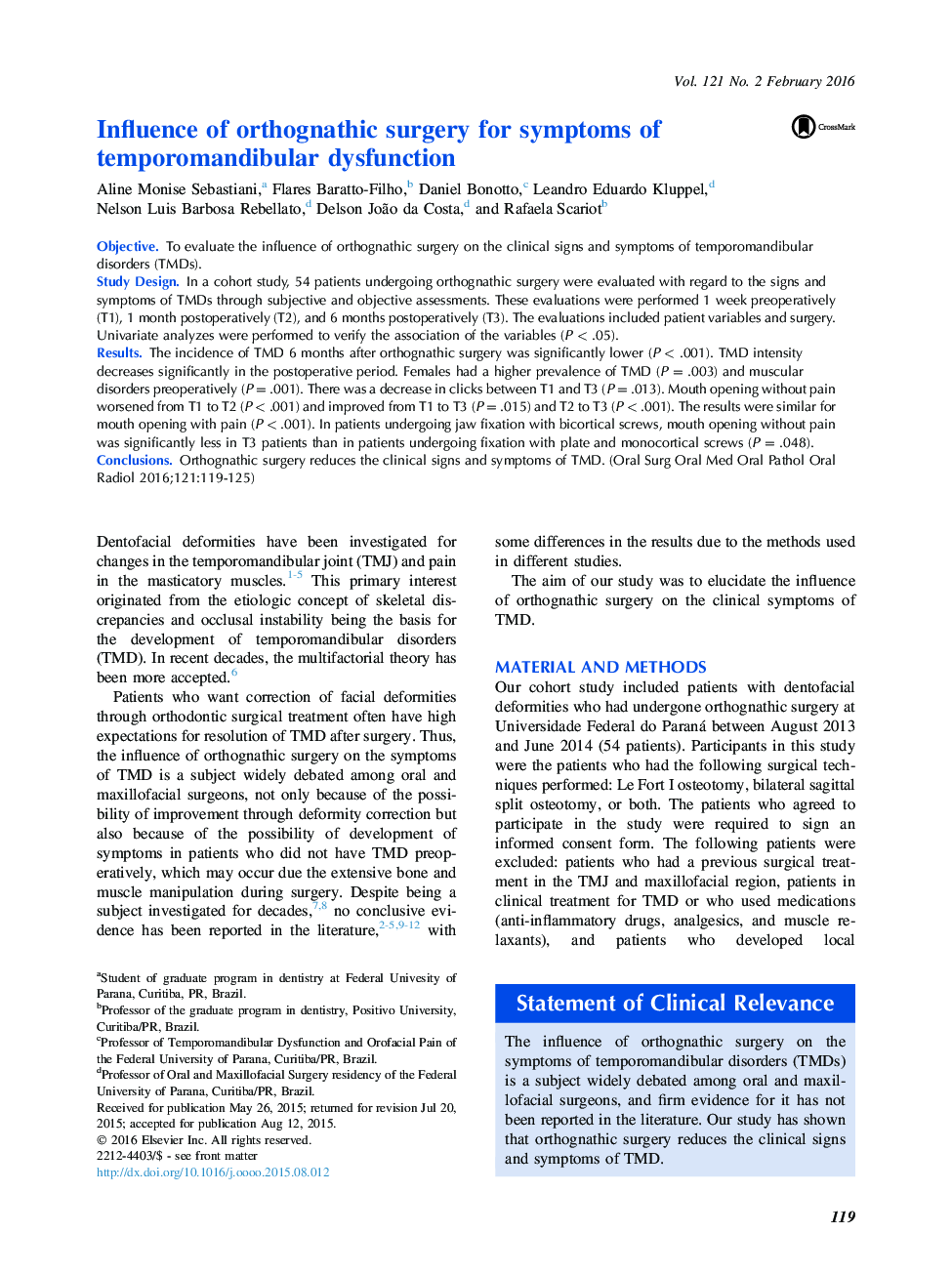| Article ID | Journal | Published Year | Pages | File Type |
|---|---|---|---|---|
| 3166585 | Oral Surgery, Oral Medicine, Oral Pathology and Oral Radiology | 2016 | 7 Pages |
ObjectiveTo evaluate the influence of orthognathic surgery on the clinical signs and symptoms of temporomandibular disorders (TMDs).Study DesignIn a cohort study, 54 patients undergoing orthognathic surgery were evaluated with regard to the signs and symptoms of TMDs through subjective and objective assessments. These evaluations were performed 1 week preoperatively (T1), 1 month postoperatively (T2), and 6 months postoperatively (T3). The evaluations included patient variables and surgery. Univariate analyzes were performed to verify the association of the variables (P < .05).ResultsThe incidence of TMD 6 months after orthognathic surgery was significantly lower (P < .001). TMD intensity decreases significantly in the postoperative period. Females had a higher prevalence of TMD (P = .003) and muscular disorders preoperatively (P = .001). There was a decrease in clicks between T1 and T3 (P = .013). Mouth opening without pain worsened from T1 to T2 (P < .001) and improved from T1 to T3 (P = .015) and T2 to T3 (P < .001). The results were similar for mouth opening with pain (P < .001). In patients undergoing jaw fixation with bicortical screws, mouth opening without pain was significantly less in T3 patients than in patients undergoing fixation with plate and monocortical screws (P = .048).ConclusionsOrthognathic surgery reduces the clinical signs and symptoms of TMD.
